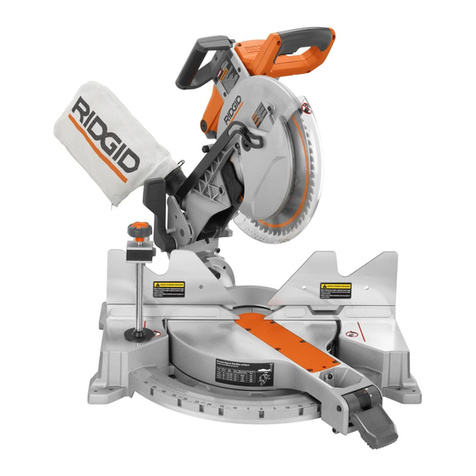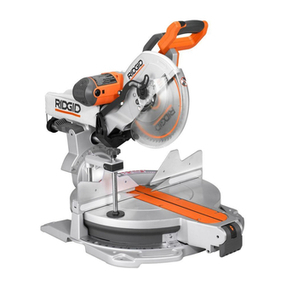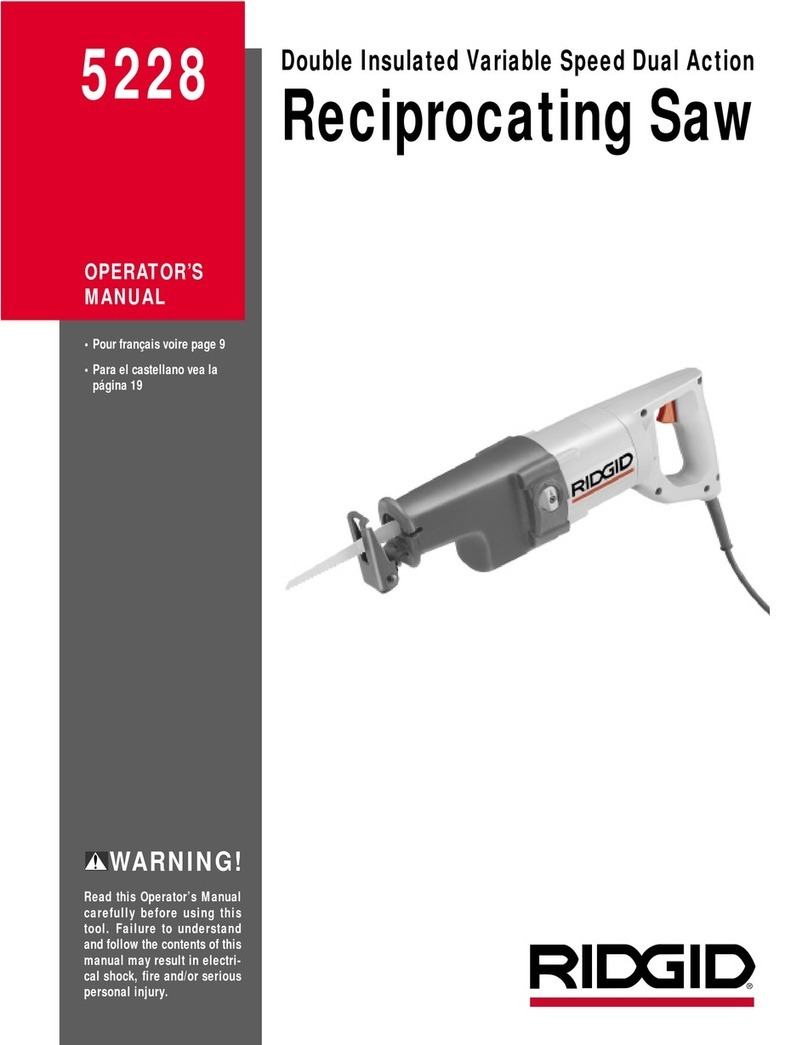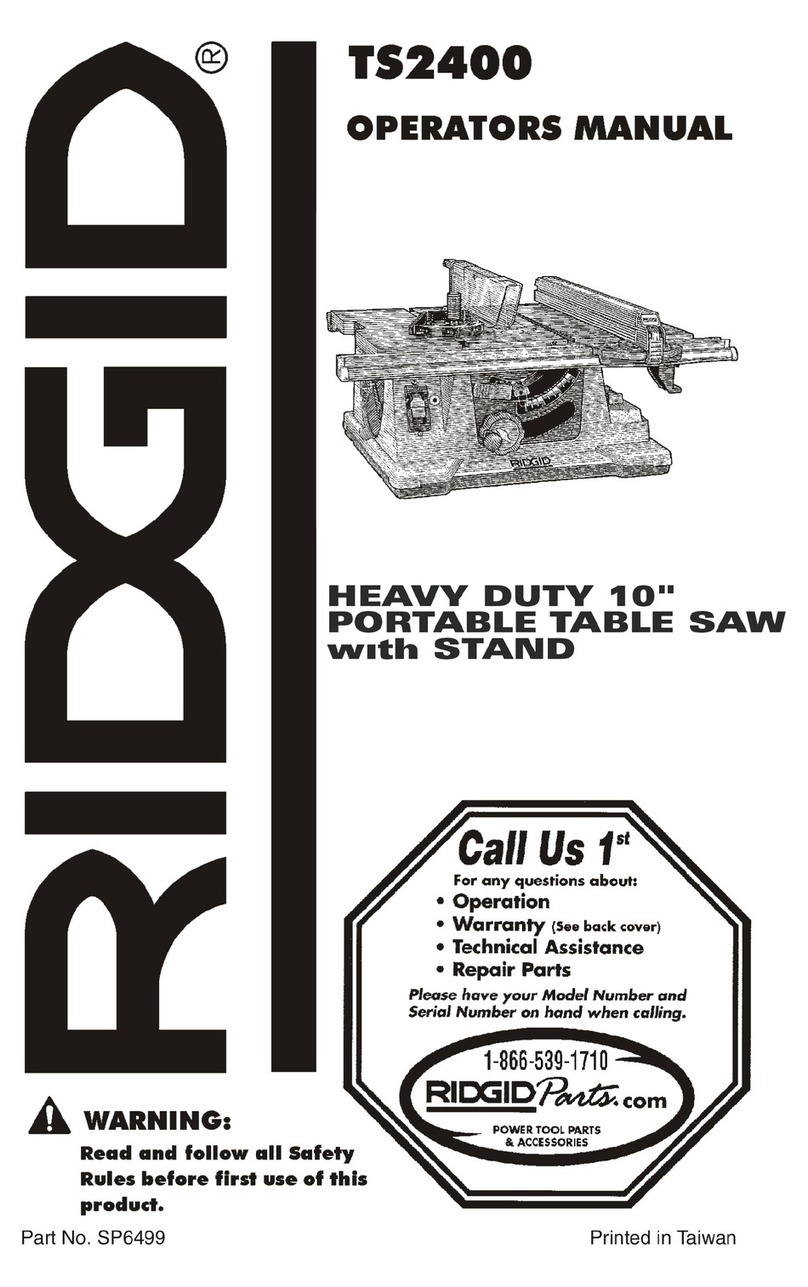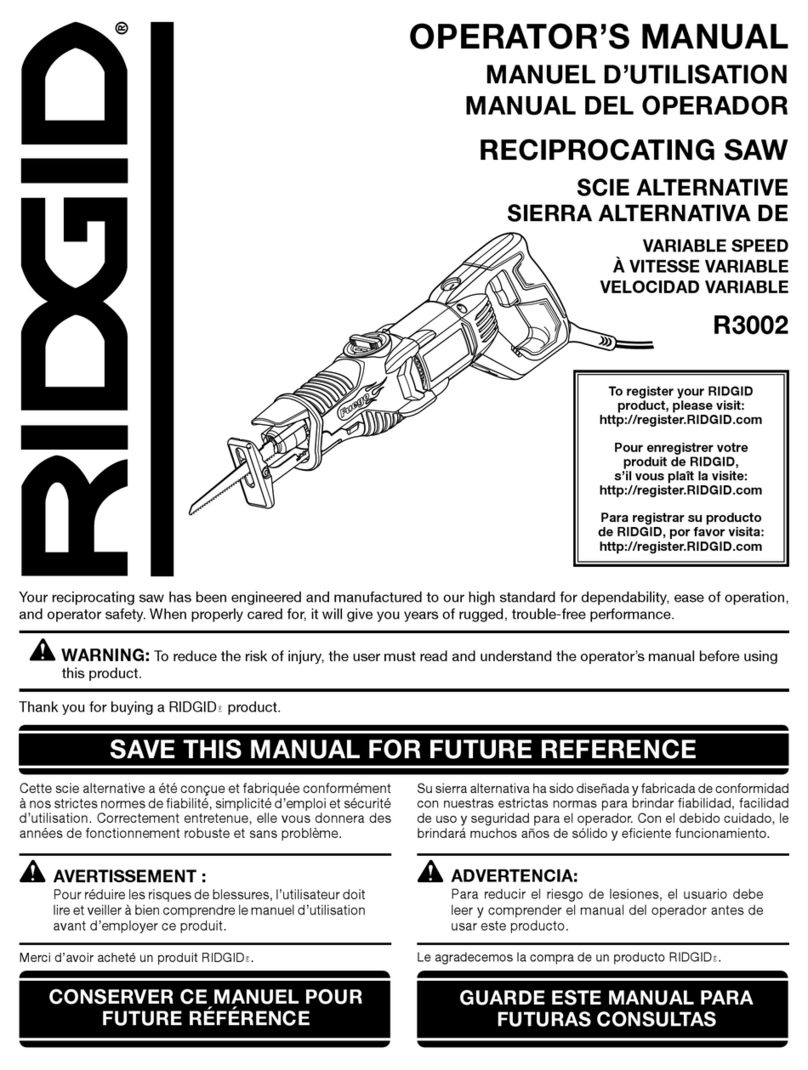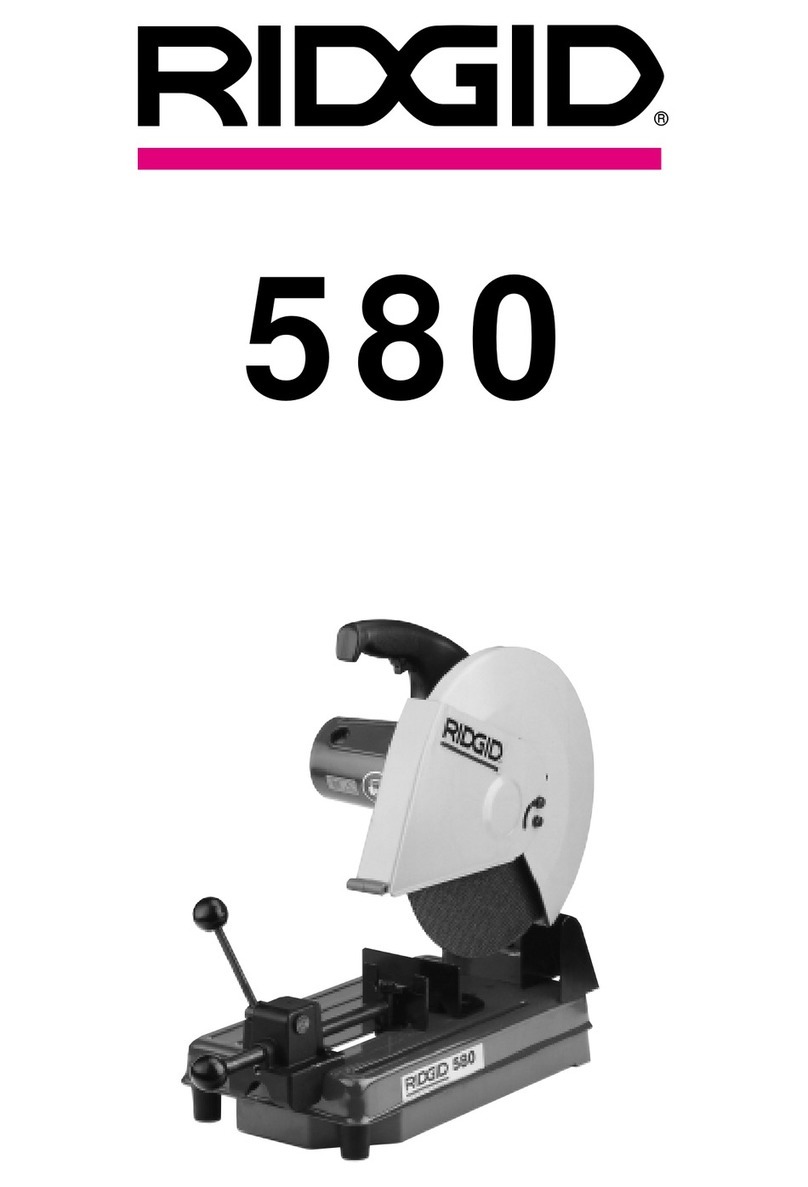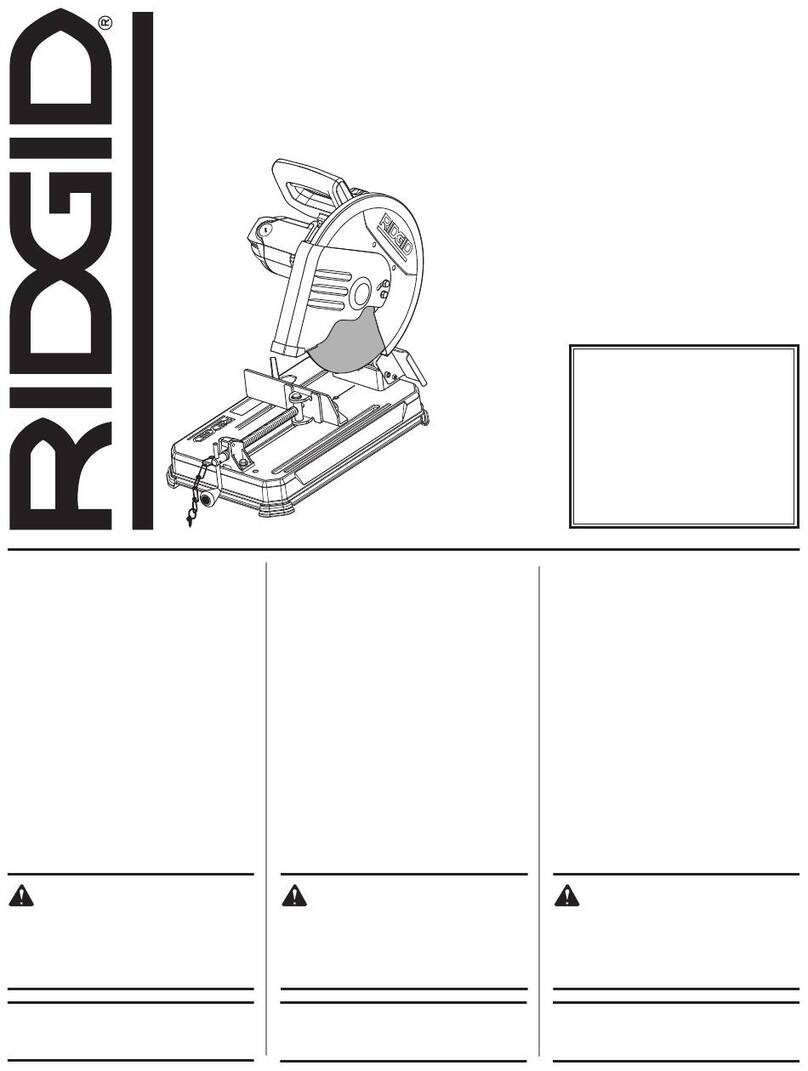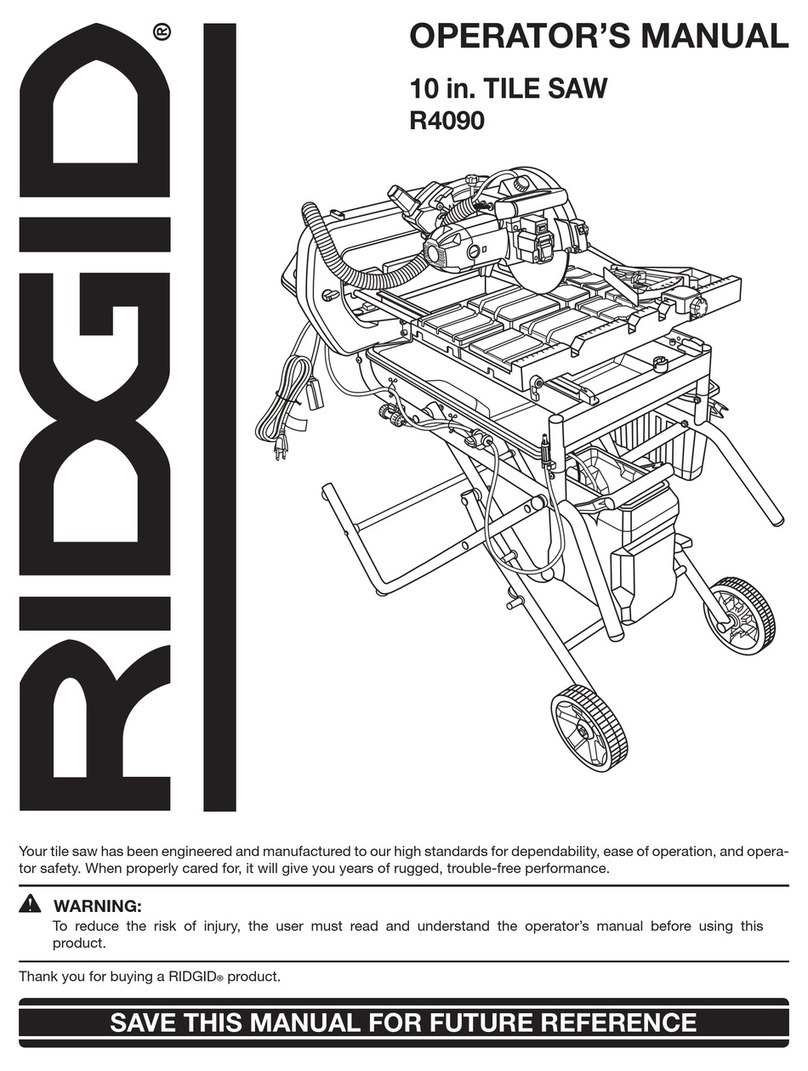
5
Use extra caution with large, very
small or awkward workpieces
• Never use this tool to finish pieces too
small to hold by hand.
• Use extra supports (tables, saw horses,
blocks, etc.) for any workpieces large
enough to tip when not held down to the
table top.
•Never use another person as a substi-
tute for a table extension, or as addi-
tional support for a workpiece or to help
feed, support or pull the workpiece.
• When cutting irregularly shaped work-
pieces, plan your work soit will not pinch
the blade. A piece of molding, for exam-
ple, must lay flat or be held by a fixture
or jig that will not let it twist, rock or slip
while being cut.
• Properly support round material such as
dowel rods or tubing. They have a ten-
dency to roll during a cut, causing the
blade to “bite”. To avoid this, always use
“V” blocks.
• Clear everything except the workpiece
and related support devices off the table
before turning the saw on.
Plan the way you will hold the work-
piece from start to finish.
• Do not hand hold pieces so small that
your fingers will go under the blade
guard. Keep your hands away from the
blade.
• Reduce the Risk of awkward operations
and hand positions where a sudden slip
could cause fingers or hand to move into
the blade.
•Don’t Overreach. Keep good footing
and balance.
• Keep your face and body to one side of
the blade, out of line with a possible
thrown piece if the blade should break.
Whenever Saw Is Running
WARNING: Don’t let familiarity
(gained from frequent use of your
scroll saw) cause a careless mistake.
A careless fraction of a second is
enough to cause a severe injury.
• Before starting your cut, watch the saw
while it runs. If it makes an unfamiliar
noise or vibrates excessively, stop imme-
diately. Turn the saw off. Unplug the saw.
Do not restart until finding and correcting
the problem.
•Keep Children Away. Keep all visitors a
safe distance from the saw. Make sure
bystanders are clear of the saw and
workpiece.
•Don’t Force Tool. It will do the job better
and safer at its designed rate. Feed the
workpiece into the saw blade only fast
enough to let it cut without bogging down
or binding.
Before Freeing Any Jammed Material.
• Turn switch “OFF”
• Wait for all moving parts to stop.
• Unplug the saw.
When backing up the workpiece, the
blade may bind in the kerf (cut). This is
usually caused by sawdust clogging
up the kerf. If this happens:
• Turn switch “OFF”.
• Wait for all moving parts to stop.
• Unplug the saw.
• With a flat blade screwdriver, turn motor
shaft by hand. Insert the screwdriver into
the slotted end of motor shaft located at
the center of the motor housing. Do this
while backing up the workpiece.
Before removing loose pieces from the
table, turn saw off and wait for all mov-
ing parts to stop.
Before Leaving the Saw
• Wait for all moving parts to stop.
•Make Workshop Child-proof. Unplug
the saw. Lock the workshop and ON/OFF
knob on the saw. Store the key awayfrom
children and others not qualified to use
the tool.


